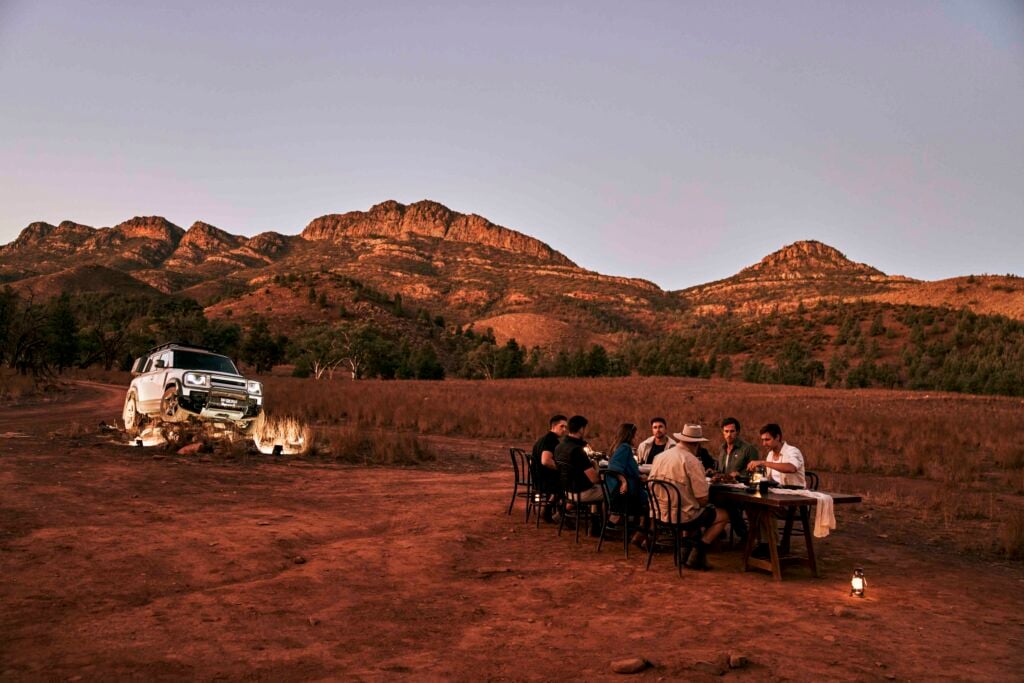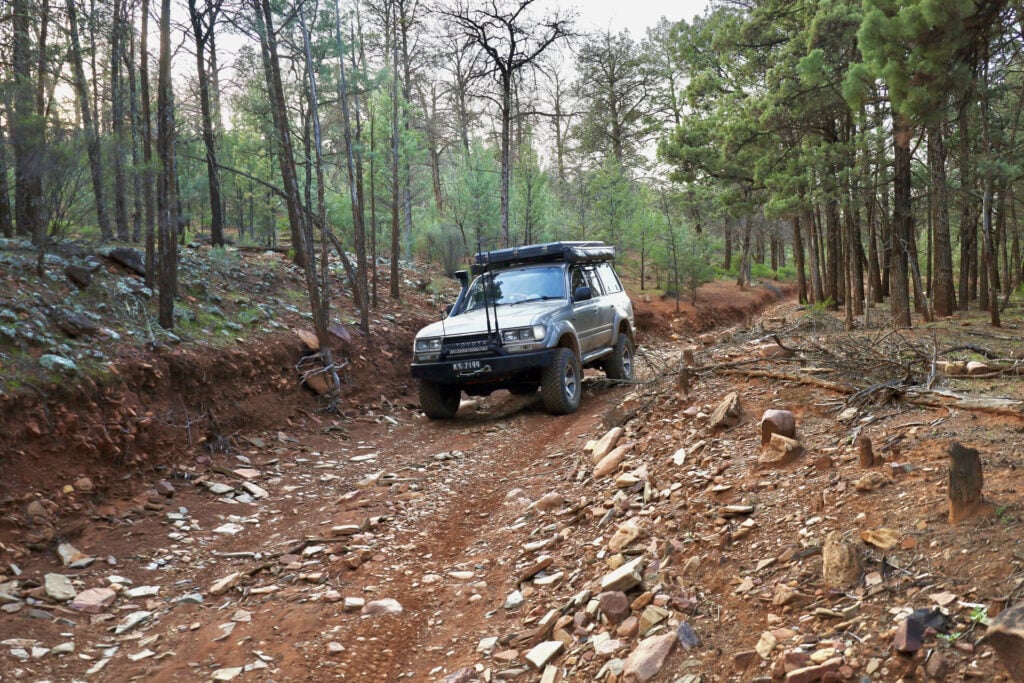The woman behind the Robe visitor centre counter eyes us over her glasses, highlighter in one hand, tide chart in the other. She’s working over a piece of chewing gum like it owes her money.
“Aw yeah, I reckon that’ll take you about four hours,” she says, sliding the chart towards us. “Maybe less, depending on the tides.” She pauses to crack her gum. “I’ve never done it.”
We exchange puzzled glances before looking down at the hand-drawn, photocopied map she’s given us – half the beach run on one side, the rest on the back. We’re in Robe, an idyllic seaside town on South Australia’s Limestone Coast, famous in 4×4 circles as the starting point for the legendary beach run to nearby Beachport.
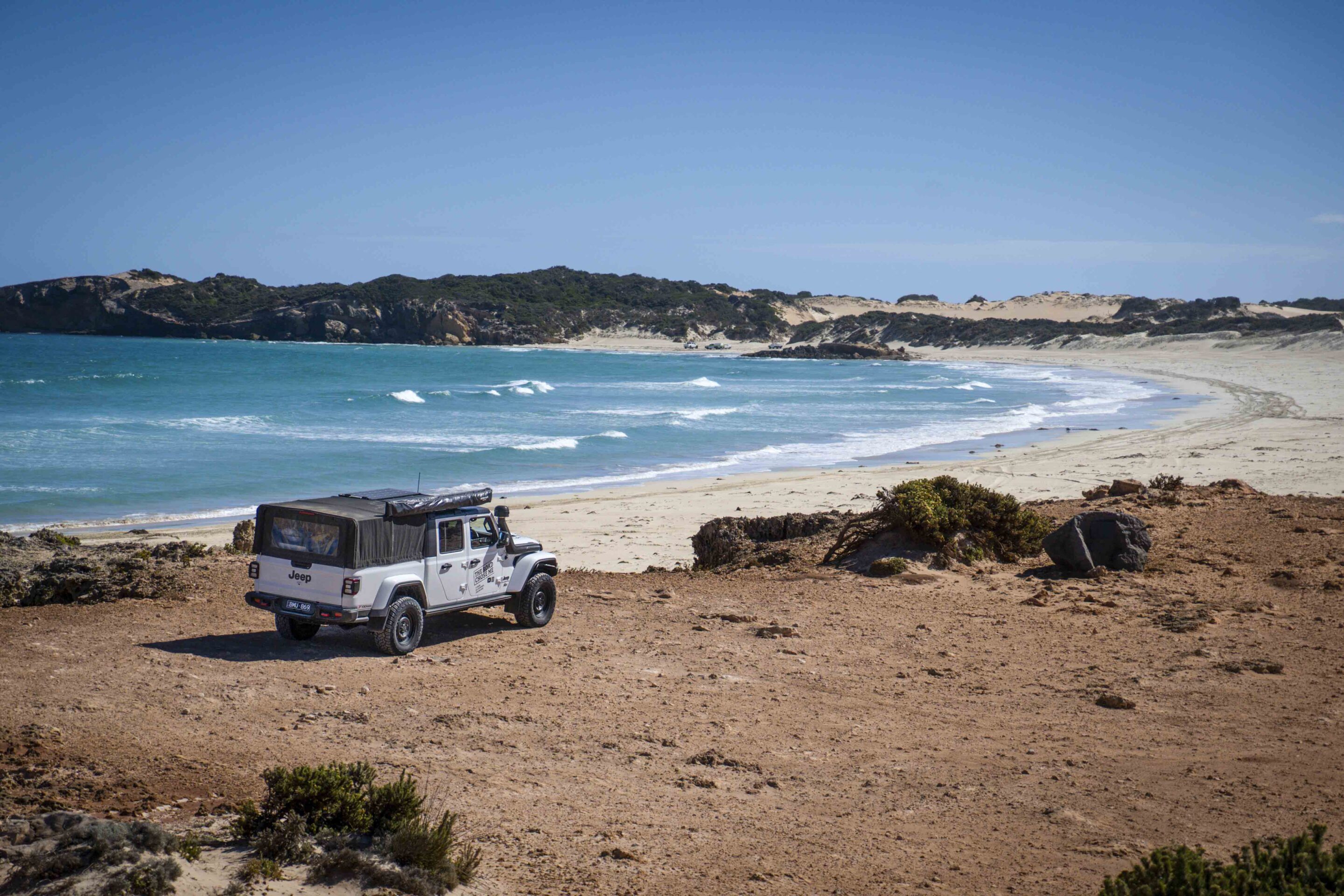
The Robe Beach Run, as it’s known, certainly ticks a lot of boxes. With world-class sand driving, the run provides the perfect shakedown for the big Gladiator, our recovery gear and the team who need practice using it all in soft sand – us. It gives a small taste of southern Australia’s stunning coastline and, at only 70km, should be a relatively short trip. A full day ought to see us complete the run, but as usual we’re making that up as we go, with no real time limits. I get the sense the lady at the visitor’s centre knows about as much as we do.
I spend my morning coffee fascinated by the litany of tracks encircling our swag – like tracking a deer through a Canadian meadow of snow. Unlike Canada, where a morning of following tracks might yield a single squirrel or fawn, here I can trace the wanderings of goannas, feral cats and what feels like a hundred different birds. The sheer volume of nocturnal wildlife is easily ten times what I’ve ever seen back home in Canada.
As a Canadian, I don’t often get the chance to drive on super-soft beach sand – truth be told, this is my first time. The short drive out of town turns sandy almost instantly, the track a powdery ribbon poking through dune grass. The change in traction brings a familiar rush – just like pulling off a Canadian winter highway onto a snow-covered track. Momentum is key, and as with a snowy mountain road back home, the steering wheel becomes more of a suggestion than a guarantee, especially at speed. The sense of what’s ahead feels instantly familiar – and it’s clear we’re in for an adventure.

Eager to get into the track, Dan drops the tyres to 15psi all round before fixing the sand flag to the Jeep’s roof. We aim for the first gap in the dunes and punch through – only to sink instantly into the soft sand beyond. Driving on sand feels much like fresh snow, but I’m relieved to find that shovelling it clear is far easier than shifting heavy, wet snow.
Sand driving has plenty in common with fresh powder – it’s all about managing momentum, traction and torque. That means dropping tyre pressures, overriding auto transmissions or traction control, and being deliberate with your speed. Robe delivers no shortage of opportunities to practise – which is exactly what we wanted, with our sights set on some of Australia’s biggest desert crossings. Once I tapped into the muscle memory from years of driving in snowy Canadian winters, I relaxed into the rhythm of the trip. Unlike back home, though, the ocean’s rising tides add an unpredictable wildcard to the equation – especially if you get stuck in the wrong spot.
Coastal sand dunes and scenic beach driving
As a snow-obsessed Canadian, I’ve always considered a beach to be anywhere water meets land. It didn’t take long to understand why Australians visiting my ski town treat our lakeside ‘beaches’ with mild disdain – they’re nothing like this.
The coast between Robe and Beachport is breathtaking, with windswept dunes broken by sandstone formations that rise like castles from the sand. These wave-battered sculptures have the same natural artistry as snow-laden, gnarled cedars perched high in the mountains. The sky is a flawless blue, and we see only the occasional vehicle. It’s as peaceful and calming as exploring above the treeline back home, yet the silence feels fuller here, as if we’ve reached the edge of something truly wild.
Early in the day there’s plenty of evidence of other vehicles along the track, but it’s not until well into the afternoon that we come across a convoy of six bogged to their axles in the sugary-soft sand. We slow to offer a hand, only to bury ourselves to the axles as well – just like pulling over to help dig someone out of a snowbank, only to become hopelessly stuck yourself. In the snow back in Canada we would’ve just pulled out our floor mats, but here the soft beach sand is the perfect chance to put the Maxtrax to work – and they perform flawlessly.

The day wears on and the beach run takes far longer than we planned. I don’t know what vehicle was being driven to knock this over in four hours – but I doubt its tyres stayed on the ground. Sure, we got stuck a few times and stopped often for photos, but the idea we could’ve blasted through the entire run in that time is laughable. By the time we crawl past the halfway mark, the shadows are stretching long across the sand and the temperature has plummeted. It’s not Canada-cold, but it’s plenty chilly when you’re wearing shorts and thongs. Time to find a spot for the night.
Originally, we’d hoped to find a sheltered nook among the dunes – but a barrage of signs, plus the gum-cracking warning from our friend at the visitor centre, made it clear that camping is only allowed in designated sites. The wind was howling and the tracks shifting fast, so the idea of a peaceful night out here was fading quickly. The last thing we wanted was to wake up with the swag half-buried under a wandering dune.
Beachside nudist resort stop
After a bit of head scratching over our limited overnight options, we spot a sign offering beachside camping at a local resort – perfect, we think.
Closer inspection reveals it’s Australia’s only nudist resort – less perfect. Dan’s sceptical, but the lure of a sheltered site eventually wins him over. With a hot tub, pool, sauna, driving range, happy hour and miles of beach trails, and, clothes or no clothes, it sounds like just the reprieve from the wind we’re after.
The locked entrance gate swings open to reveal our host – topless, wearing a loose muumuu, and smiling broadly as she waves us in from behind the wheel of a golf cart. “I’ll give you a quick tour – hop aboard!”
We climb into the golf cart for a personal run-through of the sprawling, mostly empty grounds. Just past the main office, a cheerful groundskeeper waves hello. He’s dressed for the weather – steel-toed work boots, a tool belt and a puffy jacket – but notably, no pants.

It’s a theme that plays out again and again. While we’d expected to see plenty of full nudity, the chill in the air means most guests are rugged up in beanies, jackets and sturdy footwear – with the bottom half left to the imagination. I can’t help but wonder how much (or little) clothing we’d be seeing if the sun was shining.
The resort – slightly older in both its buildings and its clientele – is sprawling and undeniably beautiful. Over Christmas, we’re told with pride, more than 100 families had called it home. Our host’s enthusiasm dips just a fraction when we explain we’re only staying the one night.
“You won’t have time to play miniton! Or use the crab traps!” she points out. We nod ruefully – there’s only so much time in the day.
After a quick soak in the hot tub and a hearty chicken curry back at our peaceful, private site, we wander down to the beach for sunset. With nothing but sand and rolling waves, it feels like we’ve reached the edge of the world. There’s no doubt these friendly, happy nudists have found an epic spot to live undisturbed – and entirely on their own terms.
Pre-dawn driving
We’re on the move before sunrise, stopping at an honesty box to buy farm-fresh eggs from the nudist chickens before rolling back onto the beach. In the soft pre-dawn glow, a lone seal basks on the sand.
High winds over the last few days have wiped away any sign of vehicles ahead, forcing us to second-guess the best or most-used tracks. Beach access points are normally marked by tall poles capped with bright orange, guiding drivers through the dunes – but shifting sand has buried most of them, leaving us to find our own way.
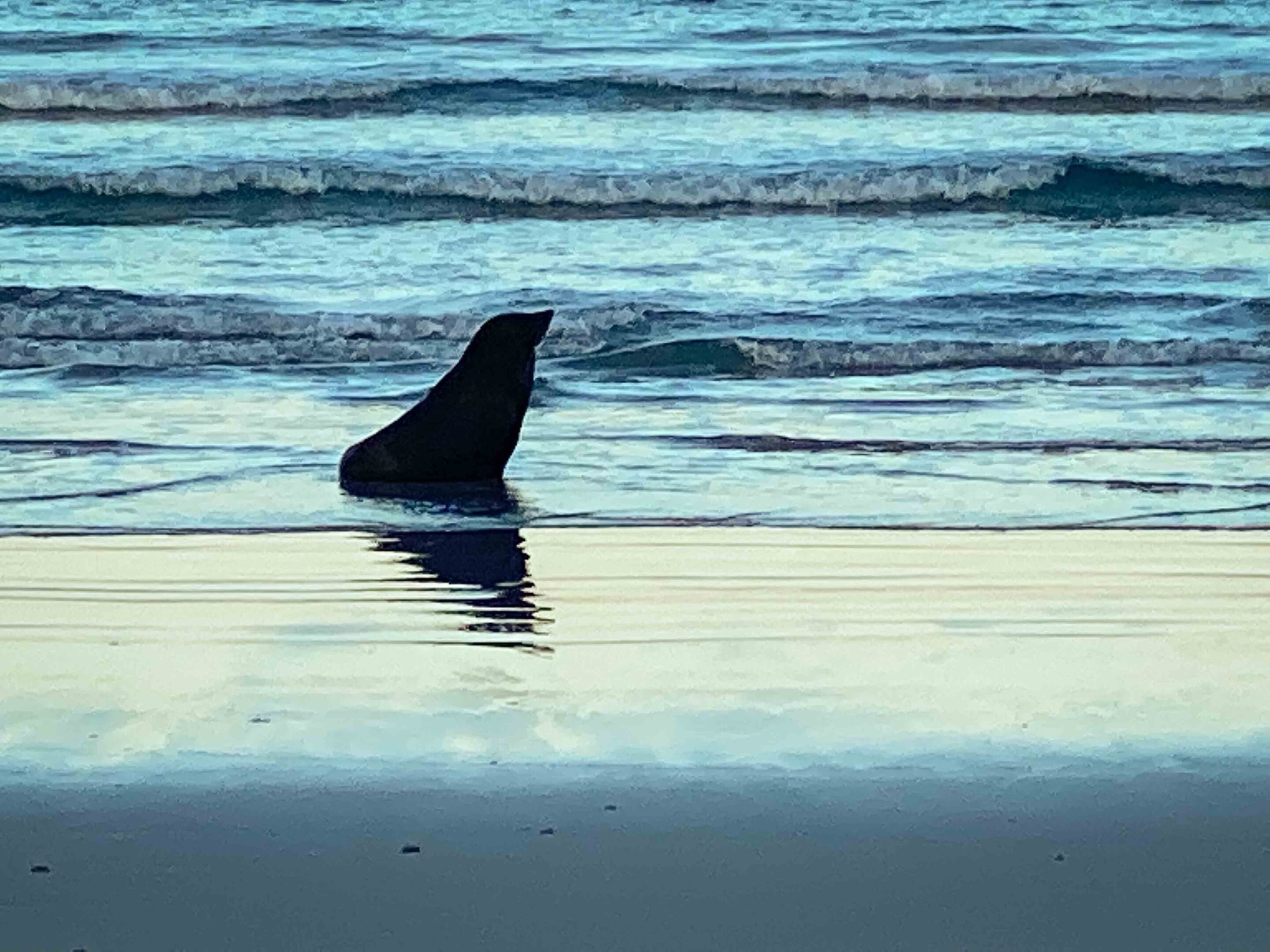
In the soft dawn light, Dan launches the drone to scout potential routes through the brushy inland tracks. It works well in patches, revealing clear paths between the dunes – but more often than not, it just adds another layer of confusion to the decision-making.
Hour after hour we push on, sometimes hugging the shoreline and racing the incoming tide, other times ducking behind the dunes and collecting a healthy set of pinstripes from the overgrown track. At one inland detour, we crest a rise and find ourselves in a vast sea of sand dunes stretching to the horizon – an explorer’s paradise.
Arrival at Beachport
After powering up and over some of the biggest dunes of the run, we suddenly drop down onto the outskirts of Beachport – feeling as though we’ve just returned from the moon. The sense is much like skiing back into a resort after a full day exploring the alpine back country – tired, windswept and a little battered, but somehow calmer, as if the raw, shifting landscape we’ve just crossed has left its mark on us.
Walking the full length of Beachport’s 1200-metre jetty feels like the right way to re-enter civilisation, the dizzying expanse of ocean stretching out beyond and below us. Picking up a fresh lobster for dinner also feels right, and before long we’ve rolled out of town to camp by an estuary teeming with birdlife. Slightly dazed from the sudden return to the comforts of the civilised world – and still chuckling about our unexpected nudist hosts – we can’t help but feel we’ve just touched back down on Earth after two days in the wild.
The Robe Beach Run was the perfect place to dip our toes into the edge of the wild – the saltiest, windiest first taste of the adventures still to come.
We recommend
-
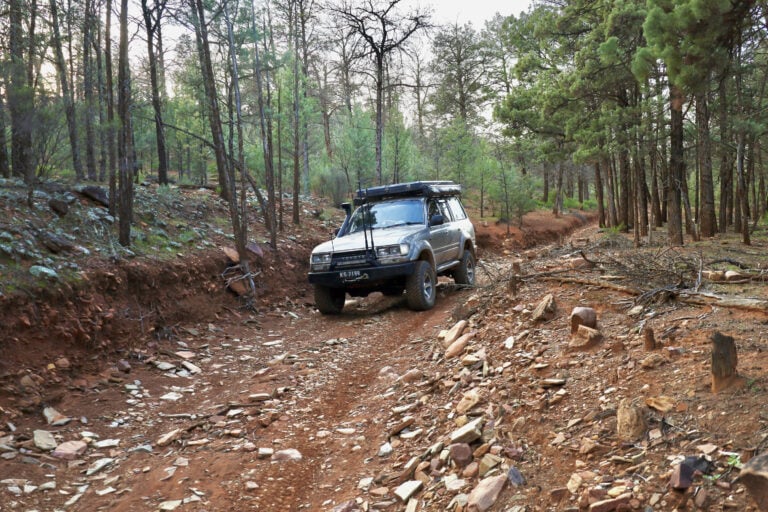 Explore SA
Explore SAExploring the western Flinders Ranges
The western part of the Flinders Ranges offers some challenging tracks, rich history and unique station stays
-
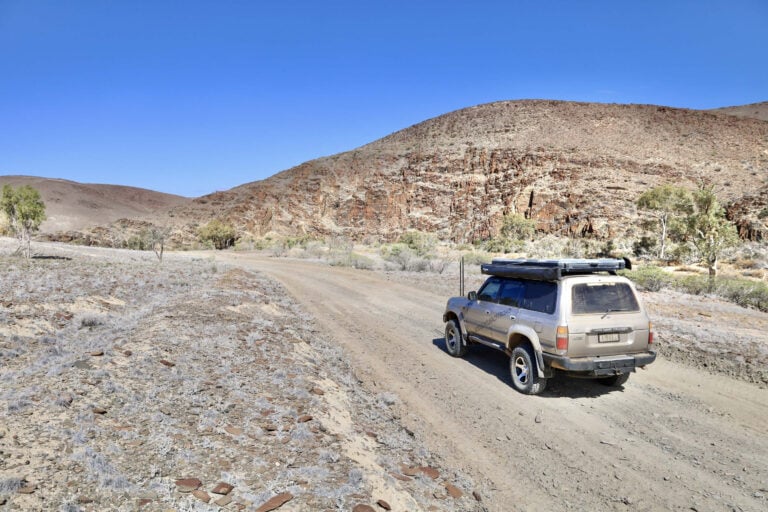 Explore SA
Explore SAMount Freeling Track, from Lyndhurst to Arkaroola
Stunning landscapes, geological wonders, Aboriginal and European history, rough 4x4 tracks, a good dose of isolation, and amazing campsites
-
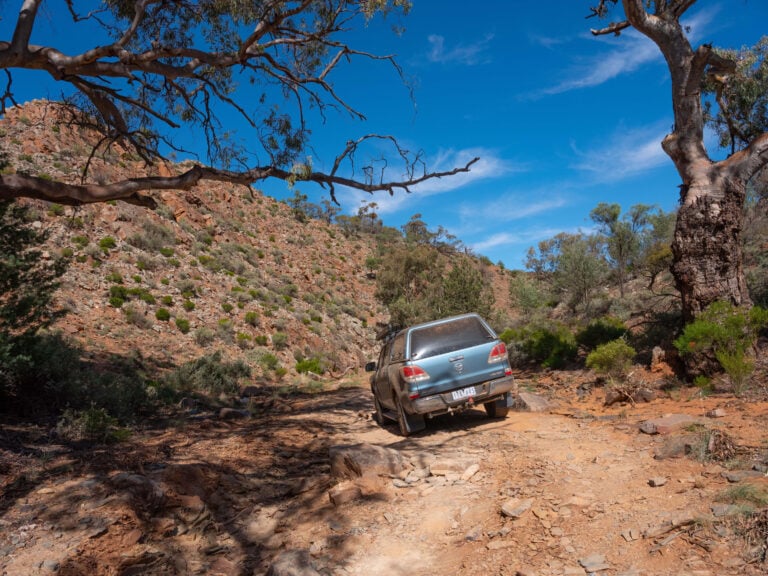 Explore SA
Explore SATouring Bendleby Station's challenging 4x4 tracks
Bendleby Station is a must-visit destination for anyone keen on polishing their off-road driving skills




